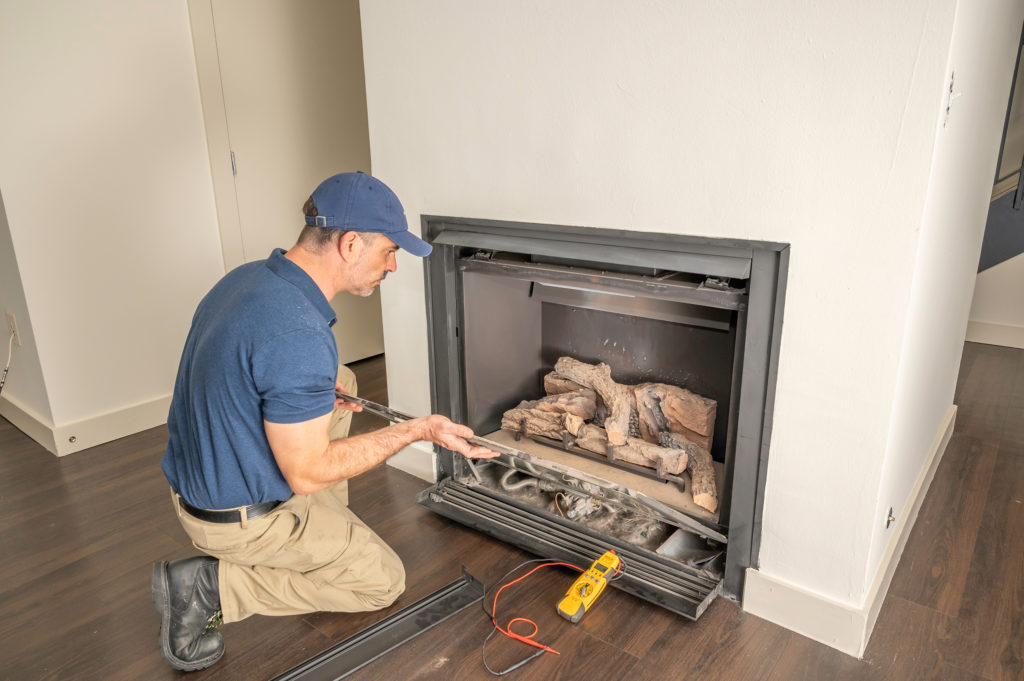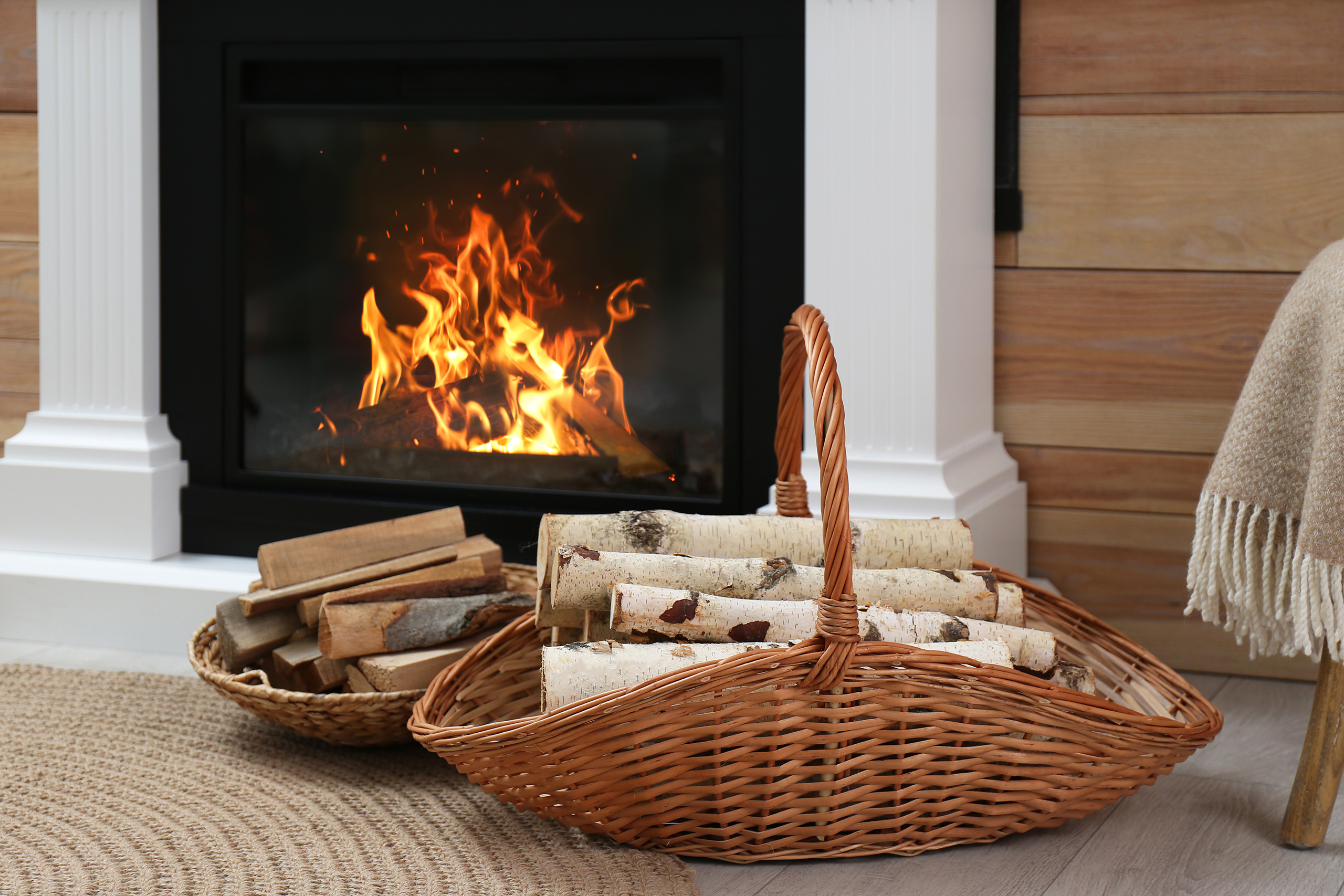Did you know how you burn firewood can make the difference between an enjoyable experience and one riddled with inefficiencies and safety hazards? The chimney is crucial to providing ventilation and safely removing smoke and harmful byproducts from the home. Understanding the best way to burn wood will extend the life of your chimney and reduce risks associated with chimneys in poor condition.
This article is your comprehensive guide to wood-burning tips for a long-lasting chimney.
The Importance of Proper Wood Burning
Your fireplace is more than just a source of warmth; it’s a centerpiece of comfort during the colder Louisiana months. Therefore, understanding the nuances of wood burning is crucial to ensure it stays efficient and safe.
The Role of Wood Burning in Chimney Health
Your chimney’s health is dependent on the type of wood you use and how you burn it. It dictates how well smoke and byproduct gases can leave the home and how much creosote builds up on the sides of the chimney.
Risks of Improper Wood Burning
Improperly burning wood leaves you vulnerable to several risks, including:
- Smoke and Air Restriction: Impeding the smooth flood of smoke and air through your chimney.
- Toxic Gas Accumulation: Increased levels of carbon monoxide threaten your home’s air quality.
- Chimney Fires: The highly combustible nature of creosote increases the risk of chimney fires.
These risks pose severe threats to your family’s health and safety. Not to mention, damage to your chimney and home can result in thousands of dollars worth of damage.
Types of Wood to Use
Every type of wood burns differently. The type of wood you choose will significantly impact how your fire burns. Let’s take a closer look at your choices.
Hardwoods vs. Softwoods
Hardwoods such as oak and maple are slow-growing trees that are usually deciduous, which means they lose their leaves in the fall and grow new ones in the spring. These trees produce dense wood, make more heat, and burn longer than softwoods.
On the other hand, softwoods such as pines are fast-growing evergreen trees, meaning they stay green year-round. They produce less dense wood, burn faster, and emit more smoke. Excessive smoke can enter your home and lead to a faster residue buildup in your chimney. Furthermore, the quicker burn is less efficient than hardwoods.
For these reasons, it is advisable to use hardwoods whenever possible since they produce more heat and burn cleaner than softwoods.
Seasoned Wood
Freshly cut firewood has a high moisture content of about 60%, creating a great deal of smoke when burned. However, seasoned firewood is wood that has been allowed to air-dry out of the elements for at least six months. It typically has a moisture content of only 30%, burns more efficiently, and produces less smoke.
Kiln-Dried Wood
Kiln-dried firewood is wood that has been dried in an oven, also known as a kiln. This type of wood typically has a moisture content below 20% and provides numerous benefits, including:
- Creates less smoke
- Produces more heat
- More efficient
- Destroys invasive pests and residual pesticides
Efficient Burning Techniques
Now that you understand the different types of wood you can use, it is time to talk about the best way to burn wood. Let’s take a closer look at efficient burning techniques.
The Top-Down Burn Method
The traditional method of firewood entails starting with kindling and smaller pieces of wood on the bottom and gradually working your way up to larger pieces. The top-down burn method is precisely the opposite.
Start by laying your largest logs on the bottom, smaller logs on top of those, followed by kindling, and finally, fat lighter wood or newspaper on top. Once you light the top of the fire, it will work through the kindling, the smaller logs, and the large logs on the bottom. This method comes with significant benefits, including:
- Less smoke – The fire has room to breathe since larger logs on top aren’t smothering it, which results in more smoke.
- More Stable – Fires with the largest logs on top tend to collapse, meaning logs can roll—which can be dangerous. This method makes it more stable since the biggest pieces are on the bottom.
- Faster heat production – Since the fire receives adequate airflow, it will produce heat much faster.
The Importance of Oxygen
Oxygen is one of the three elements needed to start and maintain a fire. Without adequate oxygen, a few scenarios can happen:
- The fire will go out
- Excess smoke is produced – This occurs because oxygen aids in the combustion of gases. Without adequate oxygen, the gases cannot fully combust and will enter the room as smoke.
- Less heat is produced – Due to the inefficient burning, some heat will go up through the chimney instead of in the room.
Controlling Temperature
The temperature of your fire affects how it burns, especially the rate of combustion. There are a few different ways to control the temperature of your fire. These are:
- Adjust the airflow – Most of today’s fireplaces have a damper that allows you to fine-tune the amount of oxygen the fire receives, affecting how hot it burns (the more oxygen, the hotter the flames).
- Fireplace grate – Building the fire on a grate allows oxygen to flow underneath the fire, increasing the temperature. Burning firewood directly on the fireplace bottom will decrease the temperature.
- The fuel – The type of wood you choose will affect the temperature. Choose smaller pieces of less dense wood with a higher moisture content for a lower temperature. Choose hardwoods if you want a hotter fire.
- Blower – Many fireplaces have a blower or circulator. If not, you can have one installed. The blower distributes the heat evenly around the room, increasing the temperature.
Signs of Inefficient Burning
Knowing the signs of inefficient burning can help you identify them quickly and adapt your methods to prevent chimney damage and health hazards. Here is what you should look for.
Excessive Smoke
Excessive smoke that escapes into the room is a sign of wasted fuel. This could be due to factors such as inadequate oxygen supply, green wood, or overloading your fireplace, which can smother your fire.
Creosote Buildup
Creosote is a flammable, sticky resin that accumulates in the chimney. This buildup is a serious fire hazard. Burning firewood cleanly is the best way to reduce creosote buildup. To remove creosote resin, having your chimney professionally inspected and cleaned is also important.
Unpleasant Odors
Foul odors emitting from your fireplace are likely due to creosote and ash deposits. A professional chimney sweep can identify, address, and resolve unpleasant odors.
Maintenance Tips for a Long-Lasting Chimney
Preventative maintenance is the key to maximizing the life of your chimney. Here is what you can do to keep your chimney in tip-top shape.
Regular Cleaning
The best way to burn wood is in a fireplace with a clean chimney, free from creosote and other residue. Regularly cleaning your chimney will prevent dangerous accumulations that can cause fires and inefficient burning.
Chimney Inspections
Schedule annual chimney inspections to ensure your chimney’s structural integrity and safety. A professional chimney sweeper will check for structural damages, cracks, leaks, buildups, and blockages that need attention.
Creosote Removal
Removing creosote at least once a year or more frequently if needed is crucial for preventing chimney fires, corrosion, and inefficient burning. Creosote buildup will wreak havoc on your fireplace system if not addressed.
Why SootServ for Your Chimney Maintenance
SootServ is Louisiana’s most trusted chimney expert. Let’s take a closer look at why you should choose SootServ for all your chimney maintenance needs.
Expertise in Chimney Maintenance
Our chimney specialists have a combined decade’s worth of experience. We use cutting-edge technology, tools, and equipment to service your chimney and extend its lifespan. We offer a comprehensive suite of services to ensure your fireplace and chimney are fully functional and provide maximum safety for your family.
Customer Testimonials
Don’t just take our word for it! Explore the satisfaction of homeowners across Louisiana through our customer testimonials. Their experiences highlight the commitment and excellence that define SootServ.
Service Areas in Louisiana
SootServ proudly services Baton Rouge and the surrounding areas, bringing top-notch chimney maintenance to residential homeowners. Our experts are ready to ensure your chimney operates efficiently and safely. Contact us today to take a step towards a safer, cozier home.



